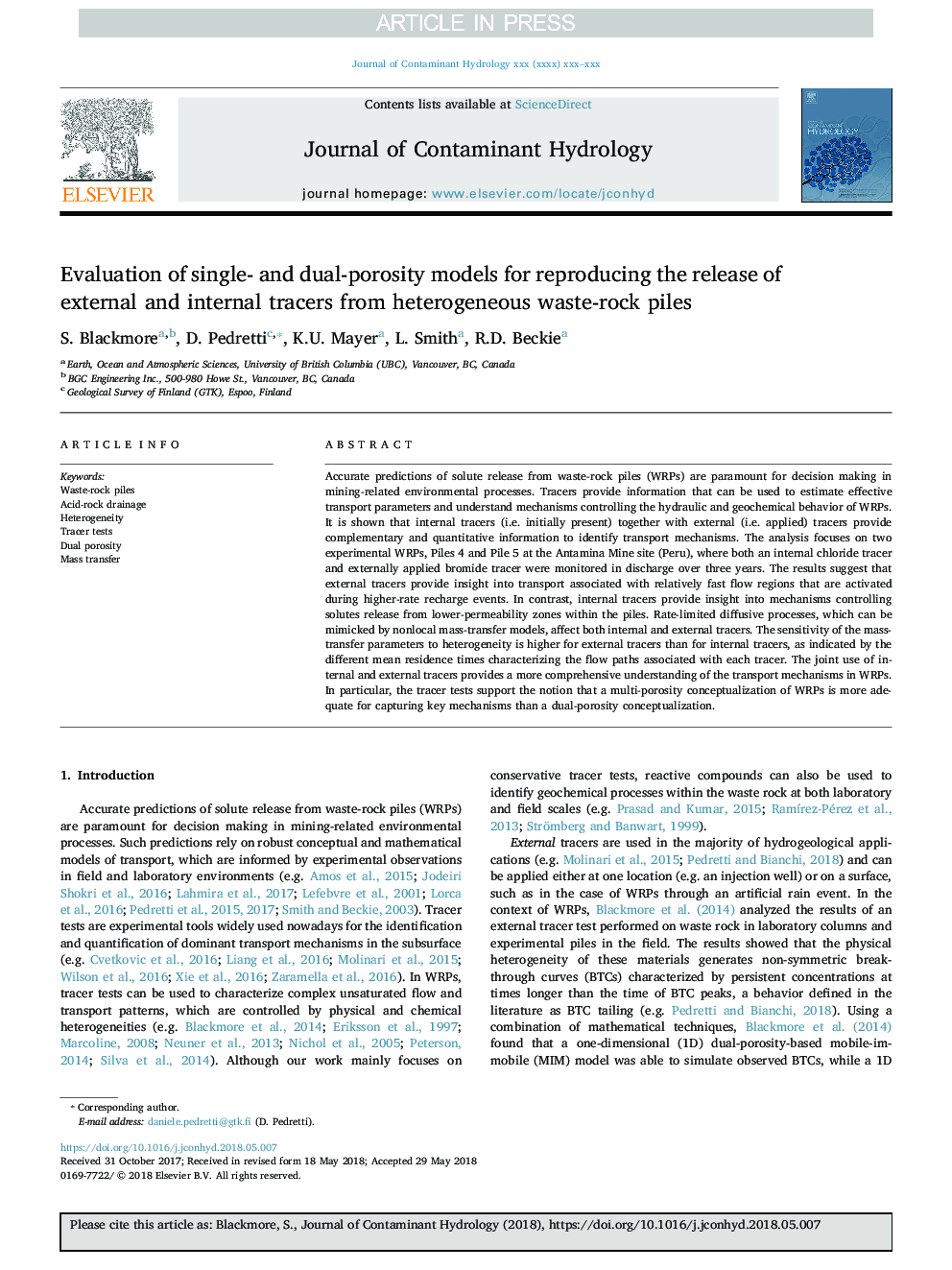| Article ID | Journal | Published Year | Pages | File Type |
|---|---|---|---|---|
| 8885793 | Journal of Contaminant Hydrology | 2018 | 10 Pages |
Abstract
Accurate predictions of solute release from waste-rock piles (WRPs) are paramount for decision making in mining-related environmental processes. Tracers provide information that can be used to estimate effective transport parameters and understand mechanisms controlling the hydraulic and geochemical behavior of WRPs. It is shown that internal tracers (i.e. initially present) together with external (i.e. applied) tracers provide complementary and quantitative information to identify transport mechanisms. The analysis focuses on two experimental WRPs, Piles 4 and Pile 5 at the Antamina Mine site (Peru), where both an internal chloride tracer and externally applied bromide tracer were monitored in discharge over three years. The results suggest that external tracers provide insight into transport associated with relatively fast flow regions that are activated during higher-rate recharge events. In contrast, internal tracers provide insight into mechanisms controlling solutes release from lower-permeability zones within the piles. Rate-limited diffusive processes, which can be mimicked by nonlocal mass-transfer models, affect both internal and external tracers. The sensitivity of the mass-transfer parameters to heterogeneity is higher for external tracers than for internal tracers, as indicated by the different mean residence times characterizing the flow paths associated with each tracer. The joint use of internal and external tracers provides a more comprehensive understanding of the transport mechanisms in WRPs. In particular, the tracer tests support the notion that a multi-porosity conceptualization of WRPs is more adequate for capturing key mechanisms than a dual-porosity conceptualization.
Related Topics
Physical Sciences and Engineering
Earth and Planetary Sciences
Earth-Surface Processes
Authors
S. Blackmore, D. Pedretti, K.U. Mayer, L. Smith, R.D. Beckie,
